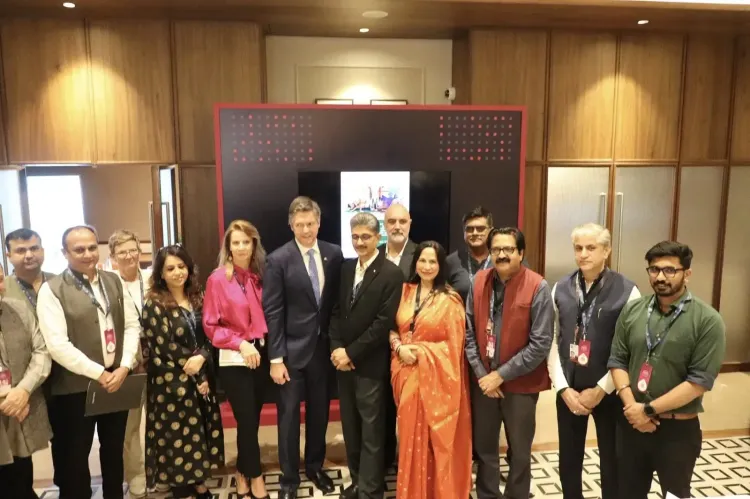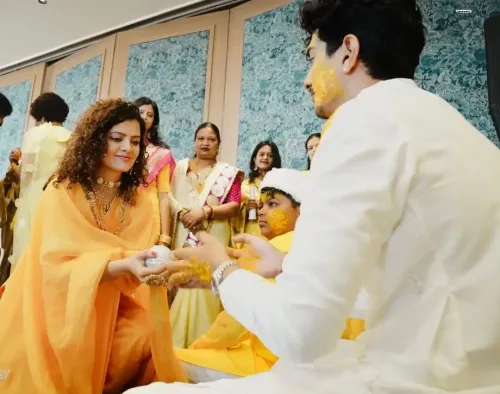Will IFFI 2025 Showcase 18 Newly Restored Classics in NFAI’s Indian Panorama Special Section?

Synopsis
Key Takeaways
- 18 restored classics will be featured at IFFI 2025.
- The festival honors significant filmmakers and their contributions to cinema.
- Restoration efforts reflect a commitment to preserving cultural heritage.
- The National Film Heritage Mission plays a key role in these restorations.
- Special programs, including live musical accompaniment, enhance the viewing experience.
Mumbai Nov 21 (NationPress) The 56th International Film Festival of India (IFFI 2025) is set to honor the country's rich cinematic legacy by presenting 18 carefully restored classics, revitalized through the National Film Heritage Mission (NFHM) by the NFDC–National Film Archive of India (NFAI).
Curated as a part of the Indian Panorama Special Package, this collection encompasses Hindi, Telugu, Malayalam, Bengali, and Marathi films, illustrating a broad array of artistic expression preserved with stringent archival standards and great reverence for each film's original creative vision. This year’s lineup holds remarkable historical significance.
It marks the 125th anniversary of V. Shantaram while paying centenary tributes to cinema legends such as Guru Dutt, Raj Khosla, Ritwik Ghatak, Bhupen Hazarika, P. Bhanumati, Salil Choudhury, and K. Vaikunth. Additionally, the festival celebrates the 50th anniversary of NFDC, highlighting its crucial role in the evolution of contemporary Indian cinema. A special showcase of Shyam Benegal’s Susman pays homage to the filmmaker's lasting influence on Indian cinema.
The restored Indian titles featured at IFFI 2025 exemplify the project's thoroughness—painstaking frame-by-frame digital restoration and color grading, often conducted under the supervision of filmmakers, cinematographers, or their collaborators whenever feasible.
Initiated by the Ministry of Information & Broadcasting in November 2016, the National Film Heritage Mission stands as one of India's most ambitious preservation projects. Its mission includes the preservation, conservation, digitization, and restoration of the nation's film heritage, encompassing camera negatives, release prints, and rare archival materials obtained from rights-holders, collectors, and international organizations.
Among the standout restorations is Ritwik Ghatak’s Subarnarekha, restored from the 35mm master positive in the NFDC–NFAI collection, with final color grading overseen by cinematographer Avik Mukhopadhyay. Muzaffar Ali’s Umrao Jaan has been restored from a preserved 35mm release print after the original negative suffered irreversible deterioration; Ali personally supervised the grading to retain the film’s unique chromatic beauty. His earlier work, Gaman, returns in a newly restored format, with missing footage reconstructed from a subtitled archival print.
Equally impressive are the restorations of Kalpana Lajmi’s Rudaali and B.N. Reddi’s Malleswari—each restored meticulously while maintaining textual and visual authenticity. The program also celebrates classics like Raj Khosla’s C.I.D, Guru Dutt’s Pyaasa, and V. Shantaram’s Dr. Kotnis Ki Amar Kahani, restored from surviving prints or dupe negatives after original materials were lost or damaged by deterioration. Modern films—including Ek Doctor Ki Maut, Ek Hota Vidushak, Kireedam (featuring Dadasaheb Phalke Awardee Mohanlal), and Musafir are also part of this impressive lineup.
One of the program’s rare gems is Baburao Painter’s Muraliwala (1927), one of the few surviving Indian silent films. It will be presented with a specially curated live musical accompaniment by composer Rahul Ranade, providing audiences with a sensory experience reminiscent of early 20th-century film exhibitions—in the presence of Baburao Painter’s two surviving daughters.
Films like Ramesh Saigal’s Shaheed (1948) and Mani Ratnam’s Gitanjali further showcase the extensive range of eras and narrative styles featured in this restoration slate, each title having posed unique technical and archival challenges.
Collectively, these restorations showcased at IFFI 2025 celebrate the contributions of some of India’s most influential cinematic figures and reaffirm India’s dedication to protecting its moving-image heritage—ensuring that the artistic, historical, and cultural memory embedded in these films continues to resonate with future generations.
–IANS
rd/









